Home>Gardening & Outdoor>Outdoor Recreation & Activities>Why Does Swimming Pool Water Turn Green
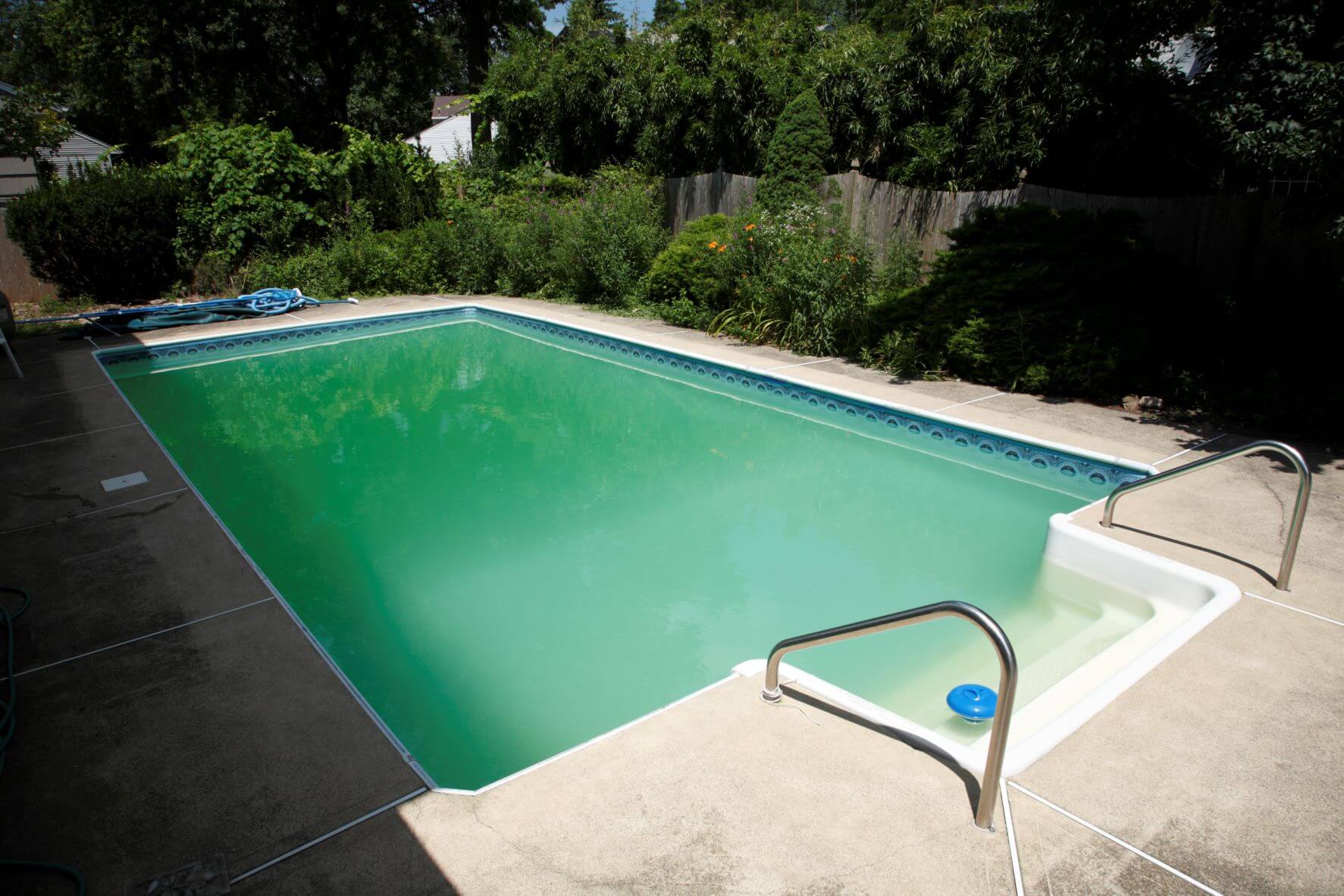

Outdoor Recreation & Activities
Why Does Swimming Pool Water Turn Green
Published: February 18, 2024
Learn why swimming pool water turns green and how to prevent it. Expert tips for maintaining clear and healthy pool water. Ideal for outdoor recreation and activities.
(Many of the links in this article redirect to a specific reviewed product. Your purchase of these products through affiliate links helps to generate commission for Storables.com, at no extra cost. Learn more)
Introduction
Swimming pools are synonymous with relaxation, fun, and a refreshing escape from the summer heat. However, the sight of green water can quickly turn this oasis into a source of frustration for pool owners. The phenomenon of swimming pool water turning green is a common issue that can arise for various reasons, often leaving pool owners puzzled and seeking solutions.
The transformation of crystal-clear pool water into a murky green hue can be alarming, but understanding the underlying causes is crucial for effectively addressing the problem. Factors such as algae growth, chemical imbalance, and sunlight exposure can all contribute to this unwelcome transformation.
In this comprehensive guide, we will delve into the reasons behind the perplexing green color of swimming pool water and explore effective solutions to restore the pool to its pristine state. By gaining insight into the root causes and implementing targeted remedies, pool owners can regain the enjoyment and tranquility that their pool is meant to provide.
Understanding the intricacies of maintaining a healthy and inviting swimming pool is essential for anyone tasked with pool ownership or maintenance. With this knowledge, pool enthusiasts can confidently tackle the challenge of green pool water and ensure that their aquatic retreat remains a source of joy and relaxation for all who take the plunge.
Key Takeaways:
- Green swimming pool water is caused by algae growth, chemical imbalance, and sunlight exposure. Combat it with shock treatment, algaecide treatment, and proactive maintenance to restore the pool’s inviting allure.
- Algae, chemical imbalance, and sunlight can turn pool water green. Use shock treatment, algaecide treatment, and proactive maintenance to fight the green tint and keep the pool refreshing for everyone to enjoy.
Read more: Why Is Chlorine Added To Swimming Pool Water
Causes of Green Swimming Pool Water
The emergence of green swimming pool water can be attributed to several underlying factors, each of which plays a distinct role in transforming the pool's inviting blue hue into an unsightly green tint. Understanding these causes is pivotal in effectively addressing the issue and restoring the pool to its former clarity.
Algae Growth
One of the primary culprits behind green pool water is the proliferation of algae. Algae are microscopic organisms that thrive in aquatic environments, and when conditions are favorable, they can rapidly multiply, leading to the characteristic green discoloration. Algae growth is often spurred by inadequate sanitation and filtration, as well as imbalanced chemical levels in the pool water. Without proper maintenance and treatment, algae can quickly take hold and transform the pool into an unappealing green spectacle.
Chemical Imbalance
A crucial aspect of pool maintenance involves meticulously balancing the chemical composition of the water. When this delicate equilibrium is disrupted, it can pave the way for the water to turn green. Imbalances in pH levels, chlorine concentration, and other essential chemicals can create an environment conducive to algae growth and other forms of microbial activity, ultimately leading to the discoloration of the pool water.
Sunlight Exposure
While sunlight is a welcome presence in outdoor pool settings, excessive exposure can inadvertently contribute to the green tint of the water. Ultraviolet (UV) rays from the sun can interact with organic and inorganic compounds present in the pool, fostering chemical reactions that promote algae growth and discoloration. Additionally, prolonged sunlight exposure can diminish the effectiveness of certain pool sanitizers, further exacerbating the issue.
By gaining a comprehensive understanding of these underlying causes, pool owners can effectively address the issue of green swimming pool water and implement targeted solutions to restore the pool to its pristine state. With a clear grasp of the factors at play, pool enthusiasts can confidently embark on the journey to reclaiming the inviting and refreshing allure of their aquatic haven.
Read more: Why Is A Swimming Pool Cloudy
Algae Growth
Algae growth stands as one of the primary contributors to the perplexing transformation of swimming pool water from a clear, inviting blue to a murky, unappealing green. Algae, a diverse group of photosynthetic organisms, can thrive in aquatic environments, taking advantage of favorable conditions to rapidly propagate. When left unchecked, this proliferation can lead to the characteristic green discoloration that plagues many pool owners.
The presence of algae in pool water is often a symptom of inadequate sanitation and filtration, as well as imbalanced chemical levels. Without proper maintenance and treatment, algae can quickly establish a foothold, turning the once pristine pool water into an unsightly spectacle.
Algae come in various forms, including green, yellow, and black varieties, with green algae being the most common culprit behind the green tint of pool water. These single-celled organisms can enter the pool through various means, such as wind, rain, or contaminated pool equipment. Once introduced into the water, they can rapidly multiply, forming visible colonies and imparting a greenish hue to the pool.
The rapid growth of algae is often facilitated by factors such as warm temperatures, sunlight exposure, and nutrient-rich water. In the absence of proper sanitation and filtration, these conditions create an ideal breeding ground for algae, allowing them to flourish and transform the pool water.
To effectively combat algae growth and restore the pool to its former clarity, targeted treatment and preventive measures are essential. This may involve the use of algaecides, which are specialized chemicals designed to eradicate existing algae and prevent further growth. Additionally, maintaining proper chlorine levels, regularly brushing the pool surfaces, and ensuring adequate filtration can help thwart the proliferation of algae and preserve the pool's pristine appearance.
By gaining a comprehensive understanding of the dynamics of algae growth and its impact on pool water, pool owners can proactively address this common issue and safeguard their aquatic retreat from the unsightly green tint that algae infestations bring. With the right knowledge and proactive measures, the battle against algae can be won, allowing pool enthusiasts to once again revel in the refreshing and inviting allure of their beloved swimming pool.
Chemical Imbalance
Chemical imbalance in swimming pool water can serve as a catalyst for the unwelcome transformation of its pristine blue hue into a murky green tint. The delicate equilibrium of chemicals, including pH levels, chlorine concentration, and other essential components, plays a pivotal role in maintaining the water's clarity and sanitation. When this balance is disrupted, it creates an environment conducive to the proliferation of algae and other forms of microbial activity, ultimately leading to the discoloration of the pool water.
One of the key factors contributing to chemical imbalance is the fluctuation of pH levels. The pH scale measures the acidity or alkalinity of the water, with the ideal range for pool water typically falling between 7.2 and 7.8. Deviations from this range can have profound effects on the water's clarity and overall health. When the pH level strays outside the recommended range, it can compromise the effectiveness of chlorine, the primary sanitizer used in pools. This, in turn, provides an opportunity for algae and other contaminants to thrive, leading to the green discoloration that plagues many pool owners.
In addition to pH levels, chlorine concentration is another critical aspect of pool water chemistry. Chlorine serves as a potent disinfectant, effectively combating bacteria, algae, and other impurities. However, maintaining the appropriate chlorine levels is essential, as insufficient chlorine can result in inadequate sanitation, while excessive levels can lead to skin and eye irritation, as well as the formation of chloramines, which can cloud the water and impart a greenish tint.
Furthermore, the balance of other essential chemicals, such as alkalinity and calcium hardness, also contributes to the overall stability of the pool water. Fluctuations in these parameters can impact the water's corrosiveness, scale formation, and overall clarity, further underscoring the importance of meticulous chemical management.
To address chemical imbalance and restore the water to its pristine state, diligent monitoring and adjustment of chemical levels are imperative. This involves regular testing of the water's chemical parameters and the judicious addition of pH adjusters, chlorine, and other balancing agents as needed. By maintaining a keen focus on chemical equilibrium, pool owners can effectively thwart the onset of green pool water and ensure that their aquatic haven remains a source of relaxation and enjoyment for all who partake in its refreshing embrace.
Sunlight Exposure
Sunlight, a ubiquitous presence in outdoor pool settings, can inadvertently contribute to the transformation of clear pool water into an unsightly green hue. While the sun's rays provide warmth and illumination, prolonged exposure can trigger a series of chemical reactions within the pool water, fostering conditions conducive to algae growth and discoloration.
Ultraviolet (UV) rays, a component of sunlight, possess the ability to interact with organic and inorganic compounds present in the pool water. This interaction can initiate photochemical reactions, leading to the breakdown of chlorine molecules and the formation of chloramines. Chloramines, in turn, can cloud the water and impart a greenish tint, detracting from the pool's inviting allure.
Moreover, sunlight exposure can diminish the effectiveness of certain pool sanitizers, particularly free chlorine. Free chlorine, the active form of chlorine responsible for combating contaminants, can be rapidly depleted when exposed to intense sunlight. This depletion compromises the sanitizer's ability to effectively neutralize algae spores and other impurities, allowing them to thrive and propagate, ultimately leading to the green discoloration that plagues many pool owners.
In addition to its impact on chlorine, sunlight exposure can also stimulate the growth of algae by providing the necessary energy for photosynthesis. Algae, like plants, utilize sunlight to convert carbon dioxide and water into energy through the process of photosynthesis. The availability of sunlight, coupled with nutrient-rich water, creates an ideal environment for algae to flourish, leading to the rapid proliferation and the subsequent green tint of the pool water.
To mitigate the effects of sunlight exposure and prevent the onset of green pool water, pool owners can employ various strategies. These may include the use of stabilizers, such as cyanuric acid, which help shield chlorine from the degrading effects of sunlight. Additionally, implementing a regular schedule for shock treatments and maintaining appropriate cyanuric acid levels can bolster the pool's resilience against the adverse impacts of sunlight exposure.
By gaining a comprehensive understanding of the role of sunlight in the discoloration of pool water, pool owners can proactively implement measures to mitigate its effects and preserve the water's clarity. Through strategic interventions and diligent maintenance, the detrimental impact of sunlight exposure can be minimized, allowing the pool to retain its inviting blue hue and serve as a refreshing sanctuary for all who seek respite from the summer heat.
Solutions for Green Swimming Pool Water
Addressing the issue of green swimming pool water necessitates a strategic approach that encompasses targeted treatments, proactive maintenance, and meticulous attention to the pool's chemical and environmental dynamics. By implementing effective solutions, pool owners can restore the water to its pristine state and ensure that their aquatic retreat remains a source of relaxation and enjoyment for all.
Read more: How To Turn A Pond Into A Swimming Pool
Shock Treatment
One of the primary strategies for combating green pool water is the application of shock treatment. This involves the addition of a highly concentrated dose of chlorine to the water, effectively elevating the chlorine levels to eradicate algae, bacteria, and other contaminants. Shock treatment serves as a potent tool for restoring water clarity and sanitation, particularly in cases where algae growth has taken hold. By administering shock treatment in conjunction with thorough brushing and filtration, pool owners can effectively combat the green tint and pave the way for a revitalized pool environment.
Algaecide Treatment
In cases where algae infestations persist, the use of algaecides can provide a targeted solution to thwart their growth and restore the water to its inviting blue hue. Algaecides are specialized chemicals designed to eradicate existing algae and prevent further proliferation. By selecting an appropriate algaecide and following the recommended application guidelines, pool owners can effectively combat algae-induced discoloration and regain control over the water's clarity.
Proper Maintenance and Filtration
Proactive maintenance and diligent filtration play a pivotal role in preventing and addressing green pool water. Regular brushing of pool surfaces, meticulous cleaning of filters, and the removal of debris and organic matter are essential components of effective maintenance. Additionally, maintaining optimal chemical balance, including pH levels and chlorine concentration, is crucial for preventing the onset of algae growth and discoloration. By adhering to a structured maintenance regimen and ensuring robust filtration, pool owners can proactively safeguard the water against the factors that contribute to its green tint, preserving its clarity and inviting allure.
By embracing these targeted solutions and integrating them into a comprehensive pool maintenance strategy, pool owners can effectively combat the issue of green swimming pool water and restore the water to its pristine state. With a proactive and informed approach, the battle against the green tint can be won, allowing the pool to once again serve as a refreshing and inviting sanctuary for all who seek respite from the summer heat.
Shock Treatment
Shock treatment stands as a pivotal strategy in the arsenal of solutions for combating green swimming pool water. When the once inviting blue hue of the pool water is marred by a murky green tint, shock treatment emerges as a potent tool for restoration. This approach involves the application of a highly concentrated dose of chlorine to the water, effectively elevating the chlorine levels to eradicate algae, bacteria, and other contaminants.
The primary objective of shock treatment is to swiftly and decisively address the underlying causes of green pool water, particularly in cases where algae growth has taken hold. By administering shock treatment in conjunction with thorough brushing and filtration, pool owners can effectively combat the green tint and pave the way for a revitalized pool environment.
The process of shock treatment involves the addition of a specific quantity of shock treatment product, typically a granular or liquid form of chlorine, to the pool water. This infusion of concentrated chlorine serves to rapidly elevate the chlorine levels, effectively sanitizing the water and neutralizing the factors contributing to its green discoloration. The dosage of shock treatment required is contingent upon various factors, including the size of the pool, the severity of the discoloration, and the specific product being used. Pool owners should refer to the manufacturer's guidelines and recommendations to determine the appropriate dosage for their pool.
Following the application of shock treatment, it is imperative to circulate the water thoroughly to ensure even distribution of the chlorine and facilitate its comprehensive action. This can be achieved by running the pool's filtration system for an extended duration, allowing the treated water to pass through the filter and undergo thorough purification. Additionally, manual brushing of the pool surfaces can aid in dislodging algae and other impurities, further enhancing the efficacy of the shock treatment.
The impact of shock treatment is not solely confined to addressing existing discoloration; it also serves as a proactive measure to prevent the recurrence of green pool water. By periodically administering shock treatment, pool owners can maintain optimal chlorine levels and effectively combat the onset of algae growth and other forms of contamination. This proactive approach to water maintenance can significantly contribute to the preservation of the pool's clarity and inviting allure.
In essence, shock treatment stands as a cornerstone of effective pool water management, offering a potent and targeted solution for combatting the green tint that plagues many pool owners. By embracing this proactive approach and integrating shock treatment into a comprehensive pool maintenance regimen, pool enthusiasts can reclaim the pristine clarity of their aquatic haven, ensuring that it remains a source of relaxation and enjoyment for all who seek respite from the summer heat.
Read more: How To Heat Swimming Pool Water
Algaecide Treatment
When the once inviting blue waters of a swimming pool succumb to the unwelcome green tint, the application of algaecide treatment emerges as a targeted and effective solution. Algaecides, specialized chemicals designed to eradicate existing algae and prevent further proliferation, play a pivotal role in restoring the water to its pristine state.
The utilization of algaecides represents a proactive approach to combatting algae-induced discoloration and reclaiming the clarity and inviting allure of the pool. These specialized chemicals are available in various formulations, each tailored to address specific types of algae infestations. From green algae, the most common culprit behind the green tint of pool water, to stubborn yellow and black algae varieties, algaecides offer a versatile and potent means of combating these unwelcome intruders.
The application of algaecide treatment involves a systematic approach to ensure optimal efficacy. Pool owners must first ascertain the specific type of algae infestation present in their pool, as this information informs the selection of the appropriate algaecide formulation. Once the type of algae is identified, the corresponding algaecide can be applied according to the manufacturer's guidelines and recommended dosage.
Upon application, algaecides work swiftly to target existing algae colonies, effectively disrupting their growth and eradicating their presence in the water. This proactive intervention not only addresses the immediate discoloration but also serves as a preventive measure, thwarting the resurgence of algae and preserving the water's clarity over the long term.
In addition to eradicating existing algae, algaecides create an inhospitable environment for further growth, effectively impeding the proliferation of these unwelcome organisms. By introducing algaecides into the water and maintaining the recommended dosage, pool owners can fortify the water against the factors that contribute to its green tint, ensuring that the pool remains a refreshing and inviting sanctuary for all who seek respite from the summer heat.
In essence, algaecide treatment represents a proactive and targeted approach to combatting green swimming pool water, offering a potent means of eradicating existing algae infestations and preventing their resurgence. By integrating algaecides into a comprehensive pool maintenance strategy, pool owners can effectively reclaim the pristine clarity of their aquatic haven, ensuring that it remains a source of relaxation and enjoyment for all.
Regularly test and balance the pool’s pH, chlorine, and alkalinity levels to prevent algae growth and keep the water clear. Use a pool cover when not in use to minimize sunlight exposure.
Proper Maintenance and Filtration
Proper maintenance and meticulous filtration stand as foundational pillars in the ongoing battle against green swimming pool water. By embracing a proactive and structured approach to pool upkeep, pool owners can effectively thwart the factors that contribute to the water's green tint, ensuring that it remains a source of relaxation and enjoyment for all who seek respite from the summer heat.
Regular maintenance encompasses a spectrum of essential tasks, each playing a pivotal role in preserving the water's clarity and sanitation. Among these tasks, diligent brushing of pool surfaces holds particular significance. By routinely brushing the pool walls and floor, pool owners can dislodge algae, debris, and other impurities, preventing their accumulation and impeding the onset of discoloration. Additionally, the meticulous cleaning of filters is imperative for ensuring optimal filtration efficiency. Filters serve as the frontline defense against contaminants, trapping particles and impurities to maintain the water's clarity. Regular cleaning and maintenance of filters are essential to uphold their effectiveness and prevent the proliferation of algae and other unwelcome intruders.
Furthermore, the removal of debris and organic matter from the pool is a crucial aspect of maintenance. Leaves, twigs, and other debris not only compromise the water's aesthetics but also serve as potential nutrients for algae growth. By diligently skimming the pool's surface and removing debris, pool owners can mitigate the risk of discoloration and preserve the water's inviting allure. Additionally, the maintenance of optimal chemical balance, including pH levels and chlorine concentration, is pivotal for preventing the onset of algae growth and discoloration. Regular testing and adjustment of chemical parameters are essential components of effective maintenance, ensuring that the water remains in a state of equilibrium conducive to clarity and sanitation.
In the realm of filtration, the role of the pool's filtration system cannot be overstated. Filters serve as the primary mechanism for removing impurities from the water, playing a pivotal role in preserving its clarity and health. Regular inspection and maintenance of the filtration system, including backwashing and cleaning of filter media, are essential to uphold its efficiency. Additionally, the selection of an appropriate filter type and size, tailored to the specific requirements of the pool, is crucial for ensuring robust filtration and preventing the accumulation of impurities that can contribute to the water's green tint.
By embracing these proactive measures and integrating them into a comprehensive pool maintenance strategy, pool owners can effectively combat the issue of green swimming pool water and restore the water to its pristine state. With a proactive and informed approach, the battle against the green tint can be won, allowing the pool to once again serve as a refreshing and inviting sanctuary for all who seek respite from the summer heat.
Conclusion
In conclusion, the transformation of swimming pool water from a clear, inviting blue to a murky green hue is a common issue that can arise due to various factors, including algae growth, chemical imbalance, and sunlight exposure. Understanding the underlying causes of green pool water is essential for effectively addressing the problem and implementing targeted solutions to restore the pool to its pristine state.
Algae growth, fueled by inadequate sanitation and imbalanced chemical levels, stands as a primary culprit behind the green tint of pool water. These microscopic organisms can rapidly multiply, leading to the characteristic discoloration that plagues many pool owners. Additionally, chemical imbalance, particularly fluctuations in pH levels and chlorine concentration, can create an environment conducive to algae growth and discoloration. Sunlight exposure, while beneficial in moderation, can inadvertently contribute to the green tint by fostering chemical reactions and diminishing the effectiveness of pool sanitizers.
To combat green swimming pool water, targeted solutions such as shock treatment, algaecide treatment, and proactive maintenance and filtration are essential. Shock treatment, involving the application of concentrated chlorine, serves as a potent tool for eradicating algae and restoring water clarity. Algaecide treatment offers a proactive means of preventing algae growth and reclaiming the inviting allure of the pool. Proactive maintenance, encompassing diligent brushing, filtration, and chemical management, plays a pivotal role in preventing and addressing green pool water.
By embracing these targeted solutions and integrating them into a comprehensive pool maintenance strategy, pool owners can effectively combat the issue of green swimming pool water and ensure that their aquatic retreat remains a source of relaxation and enjoyment for all. With a proactive and informed approach, the battle against the green tint can be won, allowing the pool to once again serve as a refreshing and inviting sanctuary for all who seek respite from the summer heat.
Frequently Asked Questions about Why Does Swimming Pool Water Turn Green
Was this page helpful?
At Storables.com, we guarantee accurate and reliable information. Our content, validated by Expert Board Contributors, is crafted following stringent Editorial Policies. We're committed to providing you with well-researched, expert-backed insights for all your informational needs.
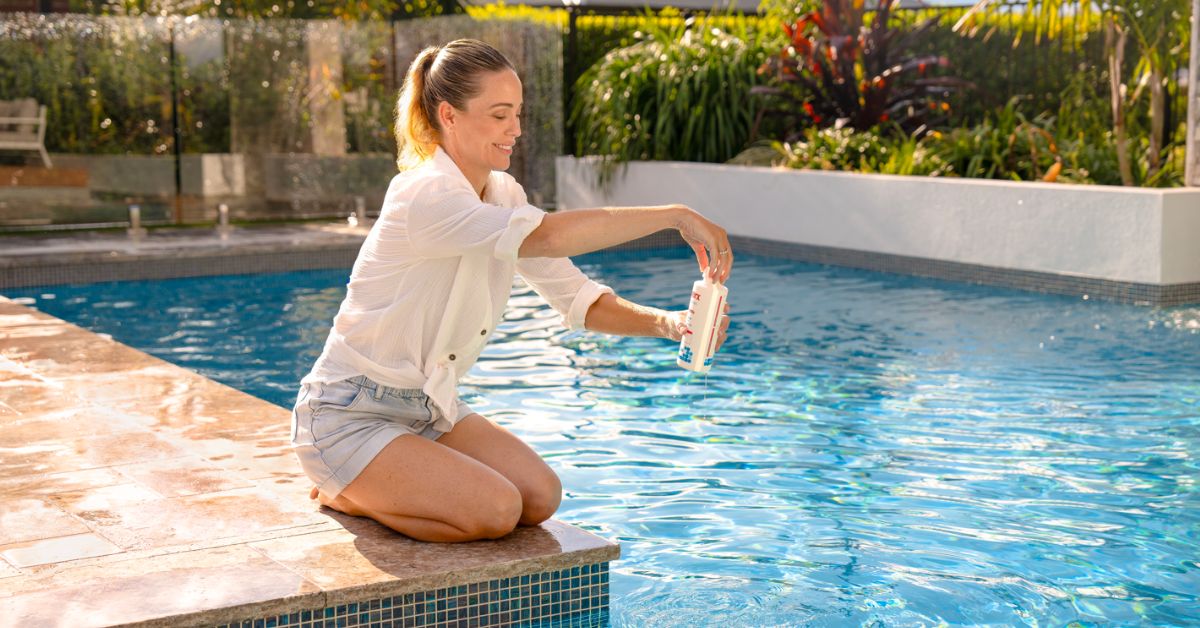
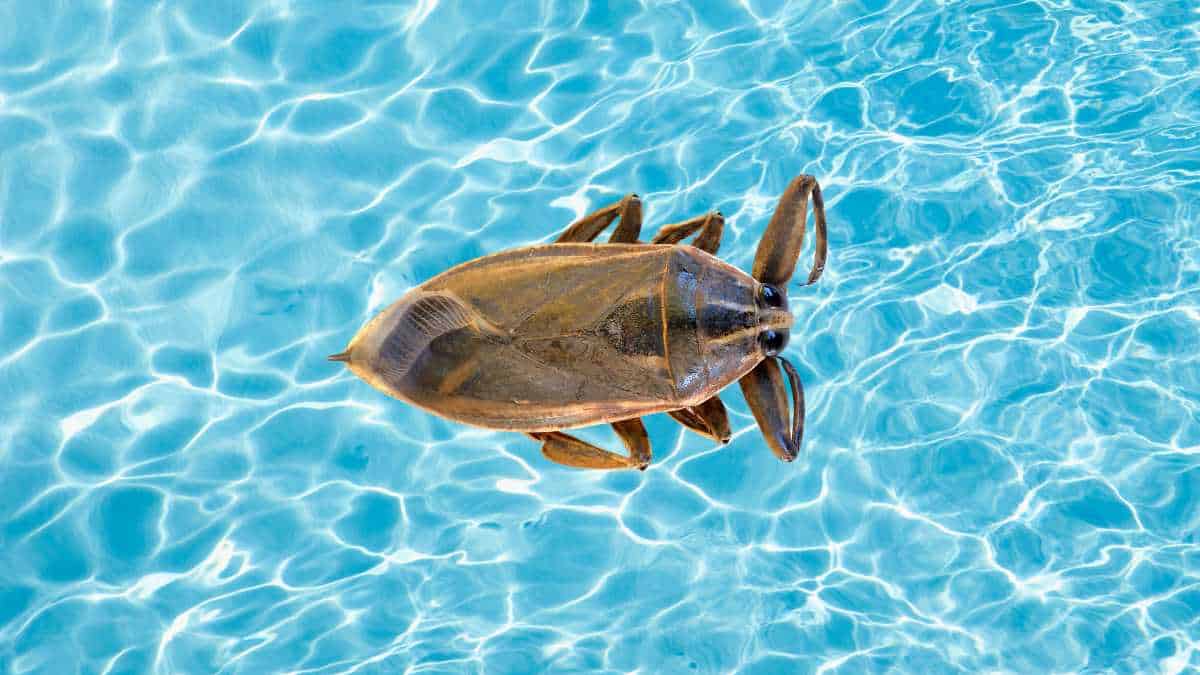
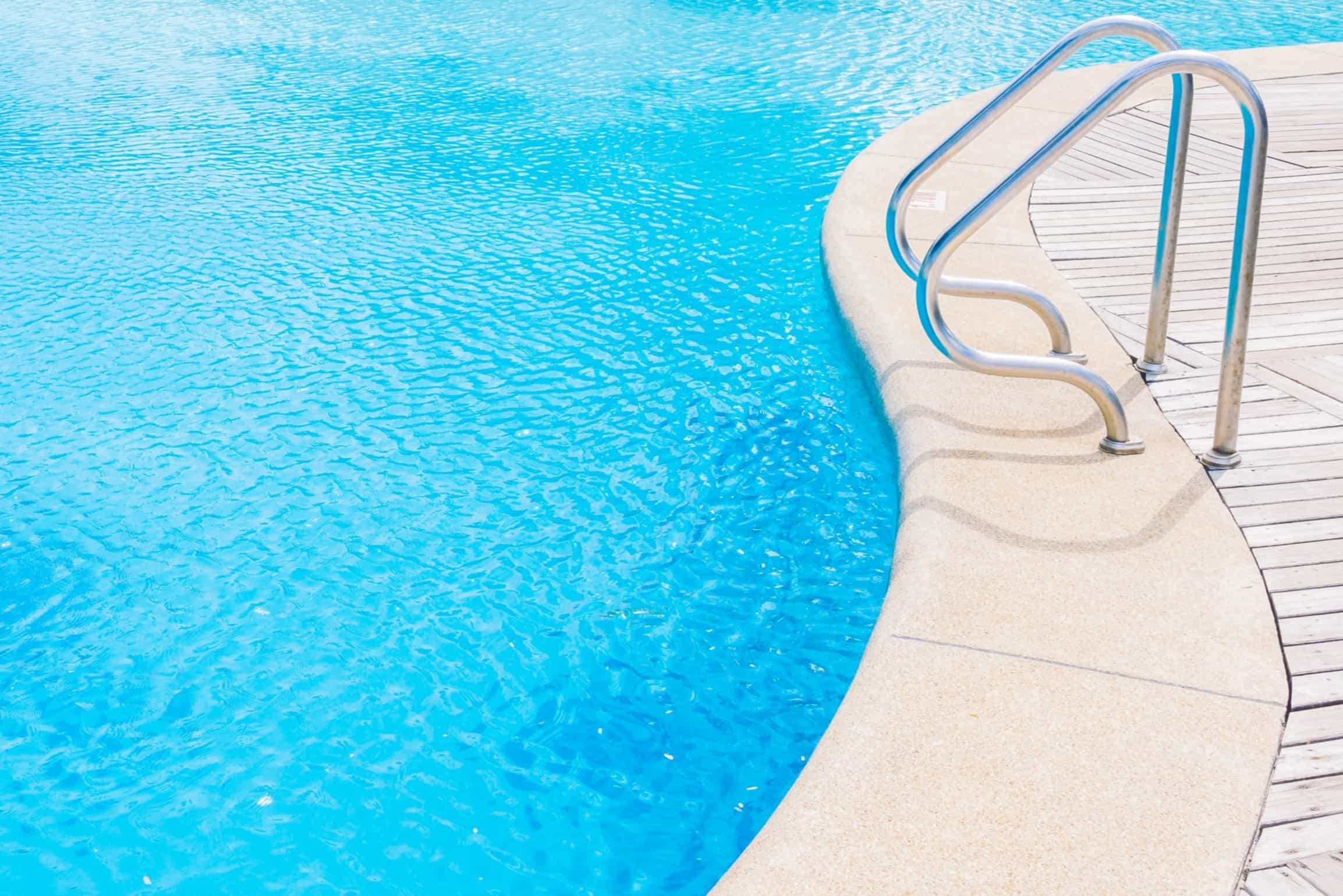

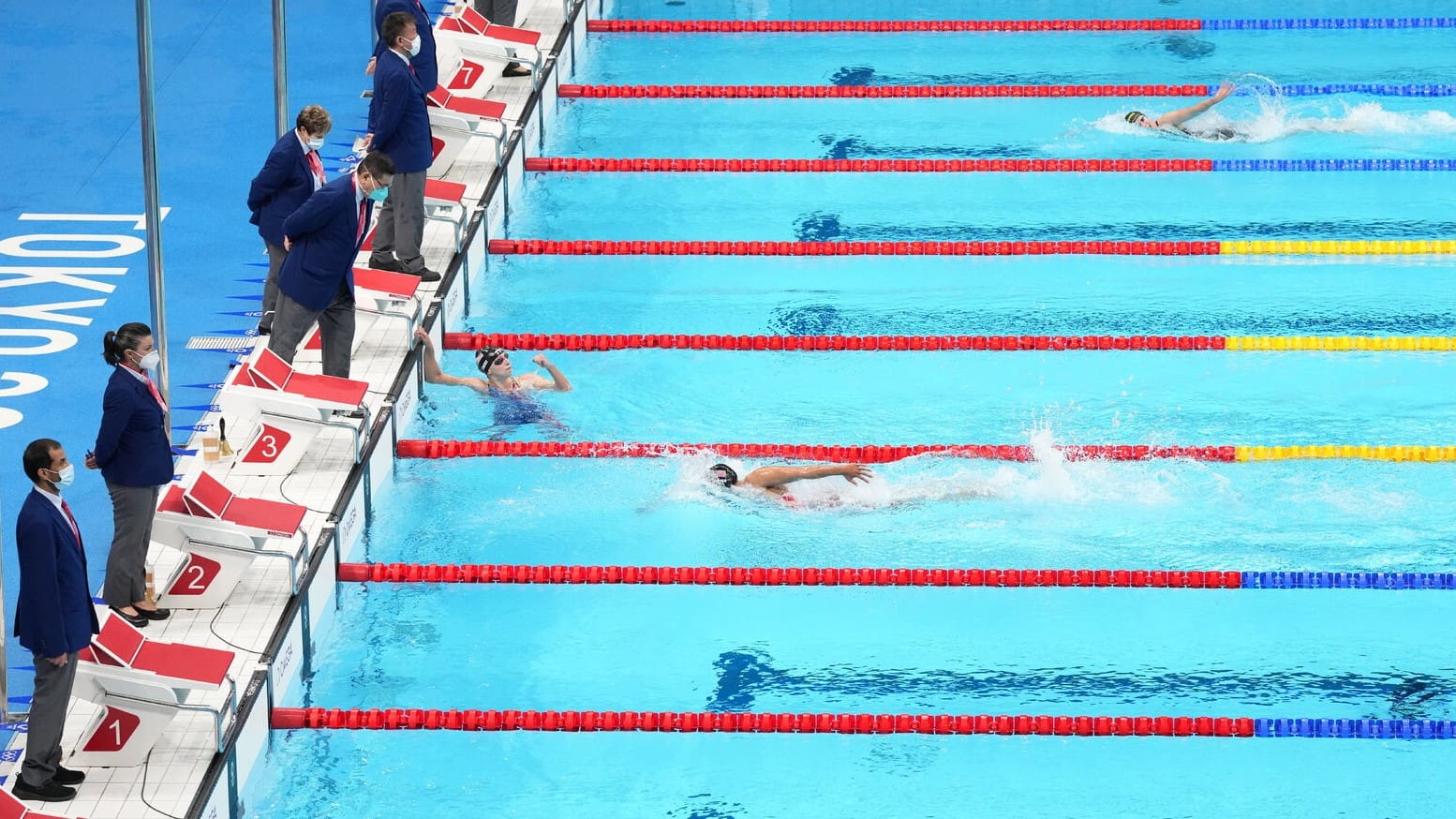
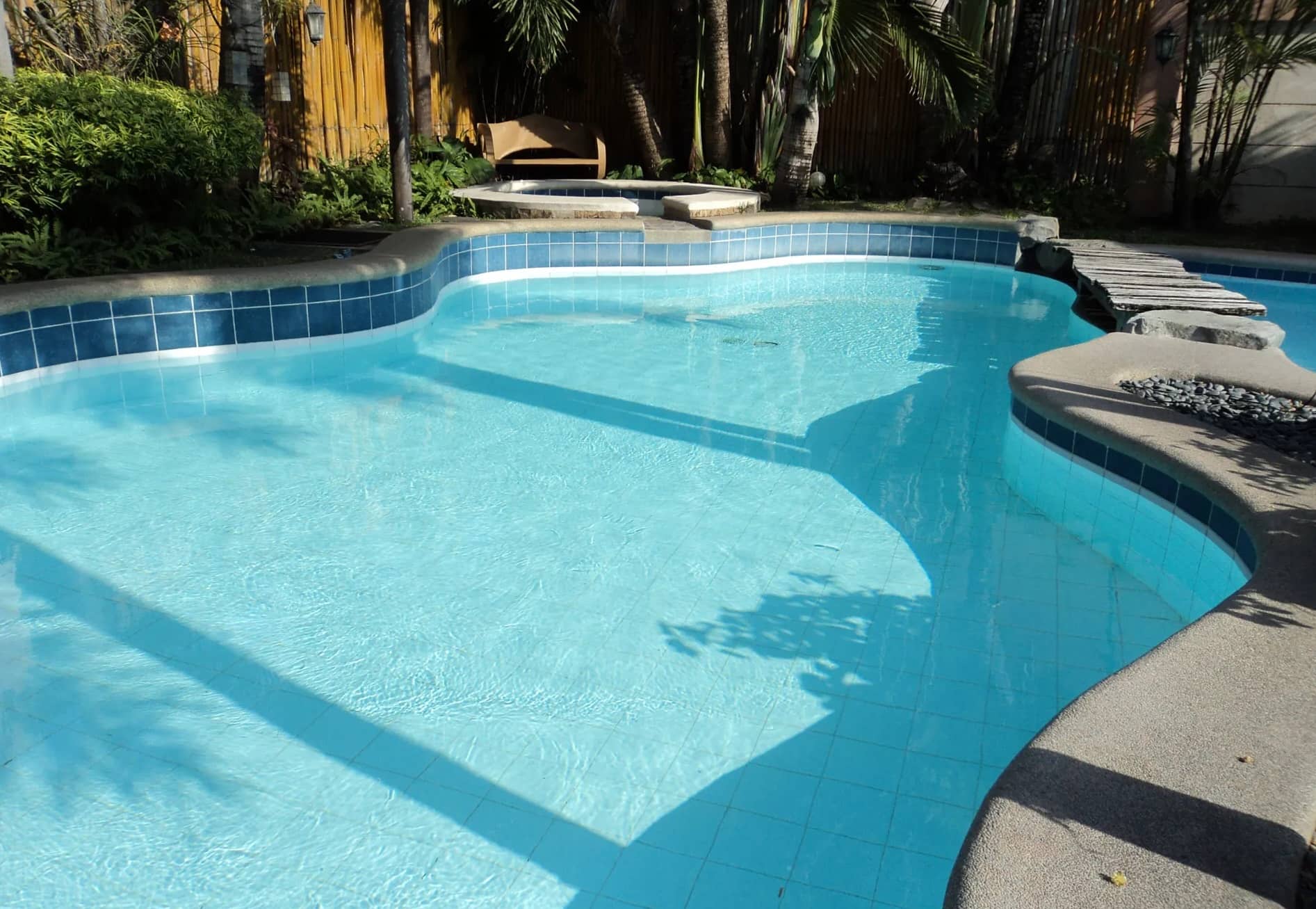

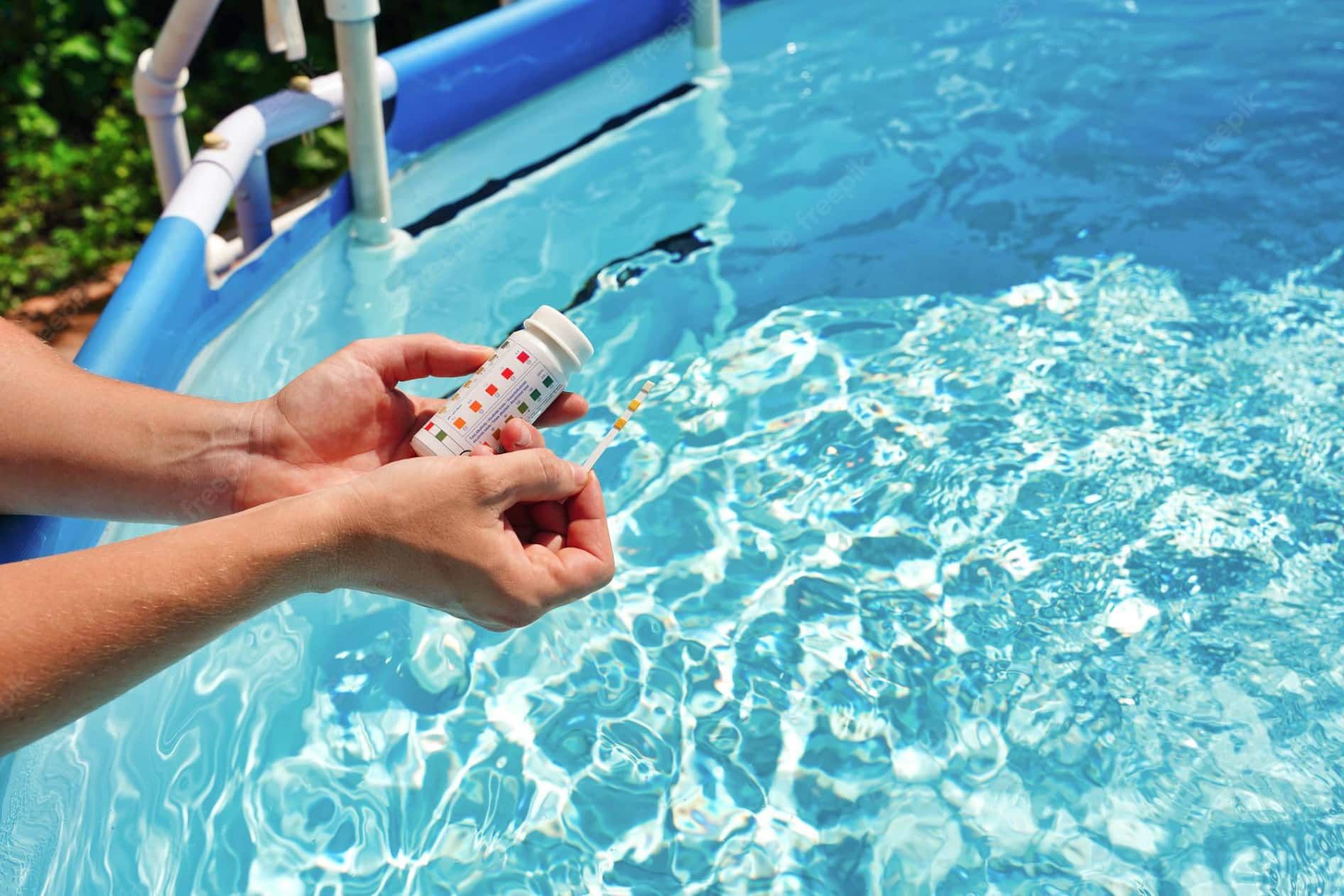





0 thoughts on “Why Does Swimming Pool Water Turn Green”